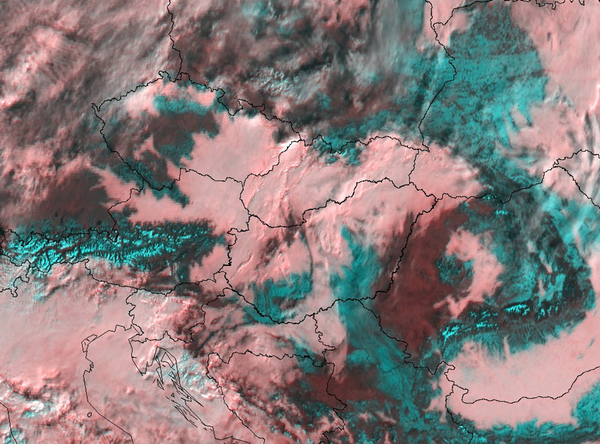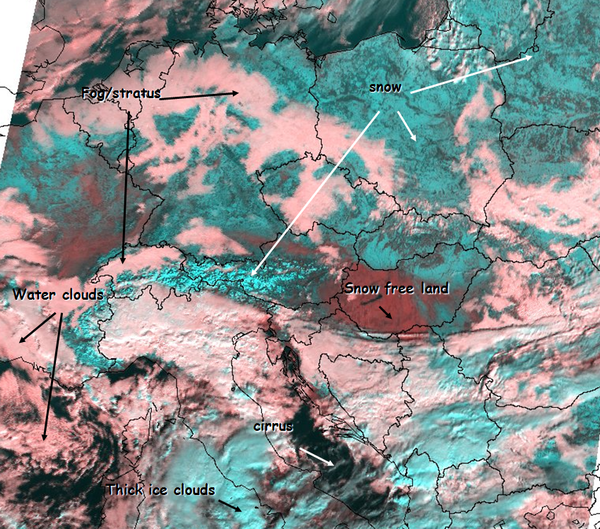Examples of interpretation
Two cases are shown with and without annotations to give examples on the proper interpretation of the different surface and cloud types (Figs. 7 and 8), and to draw attention to the typical features of snow.
| Figure 7: HRV Fog RGB for 11 January 2008 at 08:55 UTC with and without interpretation |
 
|
| Figure 8: HRV Fog RGB for 08 January 2009 at 09:20 UTC with and without interpretation |
 
|
Cloud-free snowy land can have a variable appearance in satellite imagery. If the snow lies on a plain or low hill, one can often see patches, spots or lines in it. Patches might be wooded areas, with shadows and branches not covered by snow. Lines might be rivers and spots (small patches) could be settlements. With snow-covered mountains one can often see the structure of the valleys and ridges. Snow on high mountains usually has a brighter colour than on hills or lowlands, as the snow cover is less disrupted by vegetation.